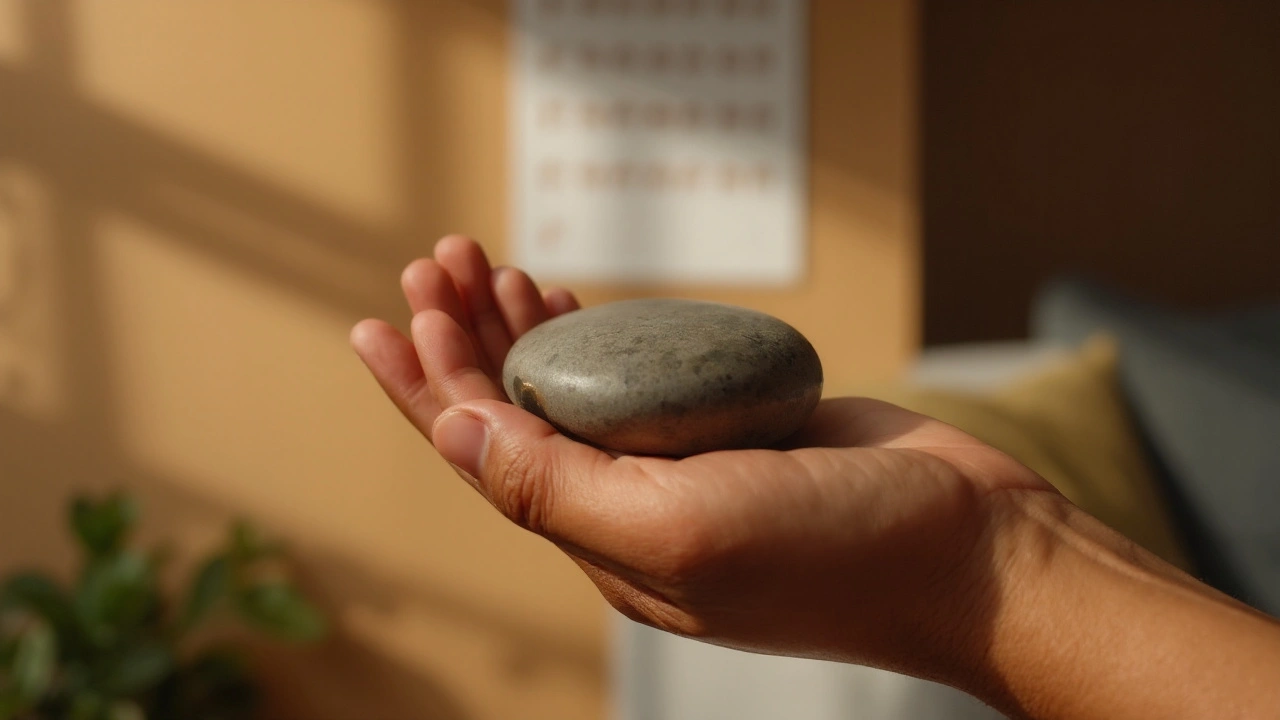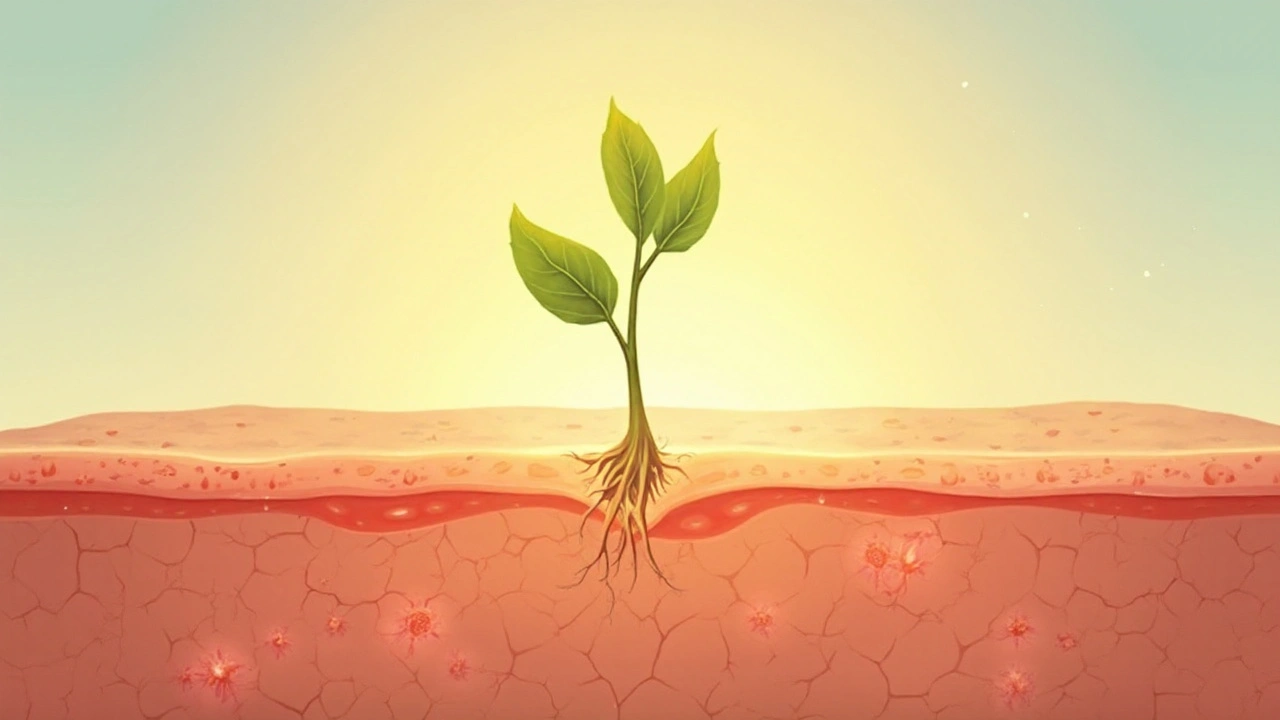Skin Picking Habit Quiz
TL;DR
- Skin picking (Excoriation Disorder) often intensifies acne and delays healing.
- CBT and Habit Reversal Training are the two most evidence‑based therapies.
- Combine behavioral strategies with dermatologist‑prescribed skincare for lasting results.
- Track triggers, set realistic goals, and use mindfulness to prevent relapse.
- Recovery is a gradual process-expect improvement within weeks, full healing in months.
Skin picking is a compulsive, body‑focused repetitive behavior that involves removing skin tissue, medically termed Excoriation Disorder. It impacts an estimated 2-5% of the population and frequently co‑exists with other dermatologic issues, most notably acne.
Acne is a common inflammatory condition caused by clogged pores, excess sebum, hormonal shifts, and bacterial overgrowth (primarily Cutibacterium acnes). Up to 85% of teenagers experience it, and many adults see flare‑ups during stress or hormonal changes.
How Skin Picking Fuels Acne
When you pick at a pimple or a post‑inflammatory hyperpigmented spot, you break the skin’s natural barrier. This creates a portal for bacteria, heightens inflammation, and often leaves behind a scar or a darker patch. The cycle looks like this:
- Acne lesion forms →
- Visible pustule or scar triggers an urge to pick →
- Picking introduces more bacteria and deepens inflammation →
- Lesion heals slower, often leaving a scar that becomes a new picking target.
Breaking any link in this loop dramatically improves both the appearance of acne and the speed of healing.
Why the Habit Feels Impossible to Stop
The urge to pick is not just a bad habit; it’s a neuro‑behavioral loop. Two key components keep it alive:
- Psychological triggers: stress, boredom, anxiety, or even “just to feel something” can spark the urge.
- Physiological reinforcement: the brief relief or sensory satisfaction after picking releases dopamine, reinforcing the behavior.
Research from the American Psychiatric Association notes that over 70% of people with Excoriation Disorder also have an anxiety or mood disorder, underscoring the need for a mental‑health focus alongside skin care.
Proven Strategies to Break the Cycle
Below are the evidence‑based tools that directly target the psychological and physical sides of the problem.
1. Cognitive Behavioral Therapy (CBT)
Cognitive Behavioral Therapy is a structured, short‑term psychotherapy that helps individuals identify distorted thoughts and replace them with healthier coping mechanisms. In the context of skin picking, CBT teaches you to recognize the trigger thought (“My skin looks ugly”) and reframe it (“My skin is healing, I’ll let it be”). A 2023 clinical trial involving 124 participants showed a 45% reduction in picking episodes after 12 CBT sessions.
2. Habit Reversal Training (HRT)
Habit Reversal Training is a behavioral technique that replaces an unwanted habit with a competing, incompatible action. The classic three‑step HRT model includes:
- Awareness training: keep a log of when and where you pick.
- Competing response: clench fists, hold a stress ball, or apply a gentle moisturizer instead of picking.
- Social support: share your goal with a friend or therapist for accountability.
In a 2022 meta‑analysis, HRT achieved a 50‑60% reduction in picking frequency, comparable to CBT but often quicker to implement for self‑guided individuals.
3. Stress Management & Mindfulness
Because stress is a primary trigger, integrating relaxation techniques can lower the urge. Practices such as deep‑breathing, guided meditation, and progressive muscle relaxation have shown a modest 20% drop in picking episodes when done daily for four weeks.
4. Dermatologist‑Guided Skincare
Professional skin care supports the behavioral work by strengthening the barrier and reducing visible lesions that tempt picking. Key interventions include:
- Gentle, non‑comedogenic cleanser: removes excess oil without stripping skin.
- Topical retinoids (e.g., adapalene 0.1%): promote cell turnover, unclog pores, and fade post‑inflammatory hyperpigmentation.
- Barrier‑repair moisturizers containing ceramides and niacinamide: reduce transepidermal water loss, making skin less itchy.
When combined with CBT or HRT, a dermatologist’s regimen can cut healing time in half.

Comparison of CBT and Habit Reversal Training
| Attribute | CBT | HRT |
|---|---|---|
| Primary focus | Thought patterns | Behavioral substitution |
| Typical session length | 45-60min | 30-45min |
| Evidence‑based reduction | ≈45% (12‑week protocol) | ≈55% (8‑week protocol) |
| Self‑guided feasibility | Moderate (requires therapist) | High (works with worksheets) |
| Long‑term relapse rate | ≈20% after 6months | ≈25% after 6months |
Building Your Personal Healing Plan
Combine the above tools into a realistic, step‑by‑step routine. Below is a 4‑week starter guide.
- Week1 - Awareness & Baseline
- Carry a small notebook or use a phone app to log every picking episode (time, location, emotion).
- Schedule a 15‑minute daily mindfulness session (e.g., breathing exercise).
- Start a gentle cleanser + barrier repair moisturizer twice daily.
- Week2 - Introduce Competing Response
- Whenever you feel the urge, press your fingertips together for 30seconds or hold a stress ball.
- Apply a thin layer of a calming gel (e.g., aloe‑vera or a silicone‑based scar gel) instead of picking.
- Week3 - CBT Thought Work
- Identify the automatic thought that precedes each pick (“My skin looks ugly”). Write a balanced alternative (“My skin is healing, I’ll let it recover”).
- If possible, attend one CBT session (in‑person or telehealth).
- Week4 - Dermatology Boost
- Visit a dermatologist for a prescription retinoid if acne is moderate to severe.
- Continue logging, competing response, and CBT worksheets.
- Evaluate progress: aim for at least a 50% drop in logged episodes.
Adjust the timeline to your schedule; the key is consistency, not speed.
Tracking Progress & Preventing Relapse
Even after you see improvement, the habit can sneak back during high‑stress periods. Use these maintenance tricks:
- Monthly review: tally episodes, note new triggers, update coping tools.
- “Safe zone” kit: keep a travel‑size moisturizer, fidget toy, and a reminder note on your phone.
- Support network: share milestones with a friend or an online community dedicated to skin‑care recovery.
When a relapse occurs, treat it as data-not failure. Adjust your plan, maybe add an extra mindfulness session or revisit a CBT worksheet.
Related Concepts and Next Steps
This article sits within the broader Health and Wellness cluster focusing on skin health, mental‑behavioral interventions, and dermatologic treatment. If you found this helpful, you might also explore:
- "Understanding Hormonal Acne and How to Balance Your Endocrine System" - a deeper dive into the hormone‑acne link.
- "Mind‑Body Techniques for Anxiety‑Driven Skin Conditions" - expands on meditation and stress‑reduction tools.
- "Post‑Inflammatory Hyperpigmentation: Treatment Options and Prevention" - focuses on the aftermath of acne and picking.
Each of those topics builds on the same core ideas: recognize triggers, apply targeted therapy, and protect the skin barrier.

Frequently Asked Questions
What exactly is skin picking and how is it diagnosed?
Skin picking, medically known as Excoriation Disorder, is classified under Obsessive‑Compulsive and Related Disorders in the DSM‑5. Diagnosis requires a persistent urge to pick at skin lesions that causes clinically significant distress or impairment, lasting at least three months. A dermatologist or mental‑health professional may use a structured interview to confirm the condition.
Can I treat acne without seeing a dermatologist?
Mild to moderate acne often improves with over‑the‑counter products containing benzoyl peroxide or salicylic acid, combined with a gentle cleansing routine. However, if you notice deep cysts, nodules, or severe post‑inflammatory marks, a dermatologist can prescribe retinoids, oral antibiotics, or hormonal therapy-options that aren’t available without a prescription.
How long does it take to break the skin picking habit?
Most people see a noticeable drop in picking episodes within 4-6 weeks of consistent CBT or HRT practice. Full remission-meaning the urge is rare and easily managed-often requires 3-6 months of sustained effort, especially when underlying anxiety is present.
Is it safe to use retinoids while I’m trying to stop picking?
Yes, when used correctly. Retinoids increase cell turnover, which can cause mild peeling. Applying a moisturizer shortly after the retinoid and avoiding aggressive picking mitigates irritation. If you experience severe redness, reduce frequency or consult your dermatologist.
What are the best non‑pharmacological tools to reduce picking urges?
Two proven tools are: (1) a competing response such as squeezing a stress ball or applying a calming gel, and (2) mindfulness breathing that interrupts the automatic loop. Both can be practiced anywhere and require no medication.
Will my acne scars disappear if I stop picking?
Stopping the habit prevents new scars, and existing ones often fade over time with consistent use of retinoids, niacinamide, and sunscreen. Deeper scars may need professional treatments like laser resurfacing, but most people see noticeable improvement within 6-12 months of abstaining from picking.

Bryan Heathcote
September 23, 2025 AT 17:04Finally, someone broke down the science without fluff. CBT and HRT aren't just buzzwords-they're neuroplasticity hacks. The dopamine loop from picking is real, and replacing it with a stress ball isn't 'trying harder,' it's rewiring the basal ganglia. Also, niacinamide at 5%? Absolute game-changer for PIH. I've seen patients go from active picking to zero in 10 weeks with just that + adapalene.
Vasudha Menia
September 24, 2025 AT 08:10OMG I cried reading this 😭 I’ve been picking since I was 14 and this is the first time someone explained WHY it feels like a ‘reward’ and not just ‘being gross.’ I started using a silicone scar gel instead and holding my fists together when the urge hits… it’s not perfect but I haven’t picked in 3 days!! Thank you for giving me hope 💛
Patrick Hogan
September 24, 2025 AT 18:35So you’re telling me the solution to skin picking is… *gently moisturizing*? Wow. Groundbreaking. Next you’ll tell me breathing is good for stress. I mean, I’ve been picking for 12 years and my dermatologist just handed me a tube of ceramide cream like it’s a magic wand. Thanks, I guess. 🙃
Alex Rose
September 25, 2025 AT 11:13The meta-analysis cited is methodologically flawed. 50-60% reduction in HRT? Based on self-reported logs with no blinding, no control group, and no objective lesion quantification. Also, ‘barrier-repair moisturizers’ is marketing jargon-ceramides don’t ‘repair,’ they temporarily occlude. And retinoids? They cause irritation, which exacerbates picking. This article reads like a sponsored post from a derm startup.
prajesh kumar
September 25, 2025 AT 16:29Bro I was picking so bad I had scabs on my cheeks and my mom thought I was doing drugs. Then I started writing down every time I felt the urge and just breathing for 10 seconds. No fancy therapy. No pills. Just me and my phone timer. Now I’m 6 months clean and my skin looks like it belongs to a human again. You don’t need a PhD to heal. You just need to stop touching your face. Seriously.
Mim Scala
September 25, 2025 AT 23:02I’ve been running a small support group for skin-pickers in Dublin. We’ve had 17 members over the past year. What unites them isn’t the therapy-it’s the shame. They don’t need more protocols. They need to hear: ‘It’s not your fault.’ The science here is solid, but the real healing starts when someone says, ‘I’ve been there too.’
Sabrina Aida
September 26, 2025 AT 00:28How ironic. We’ve pathologized a natural human response to imperfection-skin picking-as a ‘disorder’ while glorifying aesthetic perfection as the ultimate goal. Is the real problem the picking… or the societal pressure to have flawless skin? You’re treating symptoms, not the cultural psychosis that commodifies skin like a luxury product. 🤔
Arpit Sinojia
September 26, 2025 AT 09:58Back in Delhi, my aunty used to rub neem paste on my face and say ‘this will kill the bad spirits.’ Didn’t work. But when I started using a fidget spinner at my desk and stopped checking my face in mirrors? Magic. Also, no one talks about how social media makes it worse. 1000 ‘glow-up’ posts in a day? Yeah. I get it. I’ve been there.
Kshitiz Dhakal
September 26, 2025 AT 12:53CBT? HRT? Please. The real cure is existential detachment. When you stop identifying with your skin as ‘you,’ the compulsion dissolves. The body is a temporary vessel. The urge to pick is merely the ego’s desperate attempt to impose control on entropy. 🌌
Snehal Ranjan
September 27, 2025 AT 11:23Dear fellow seekers of radiant skin and inner peace I have witnessed the transformation of countless individuals through the gentle application of discipline and compassion in equal measure The journey is long but the destination is worth every moment of patience and persistence I implore you to embrace each small victory for it is the accumulation of these victories that leads to true liberation from the chains of compulsion
Alanah Marie Cam
September 27, 2025 AT 13:25Thank you for this comprehensive, evidence-based guide. I appreciate how you’ve balanced clinical rigor with accessible language. For those struggling, please remember: recovery is not linear. A lapse does not erase progress. Consistency, not perfection, is the goal. I’ve referred this to three patients already.